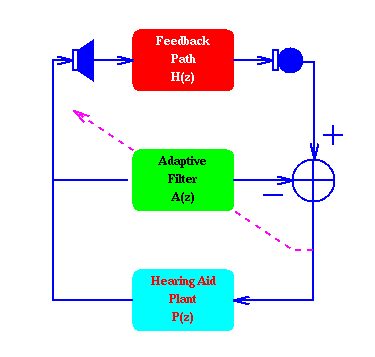Plant for Canceling Acoustic Feedback in Hearing Aids

Both continuous and non-continuous adaptation methods have been used. When using non-continuous adaptation, the forward path, P(z), is disconnected and wide band noise is sent through the feedback path. The response of the feedback path to the noise signal is used by the adaptive filter to update its filter coefficients. With continuous adaptation, the adaptive filter adapts continuously without disconnecting the hearing aid's forward path or adding wide band noise. Although non-continuous adaptation is more effective in estimating the feedback path transfer function, the added noise and disconnection of the hearing aid's forward path can be annoying to a hearing aid user.
Research in this area at the UCLA Speech Processing and Auditory Perception Lab centers on continuous adaptation methods.
